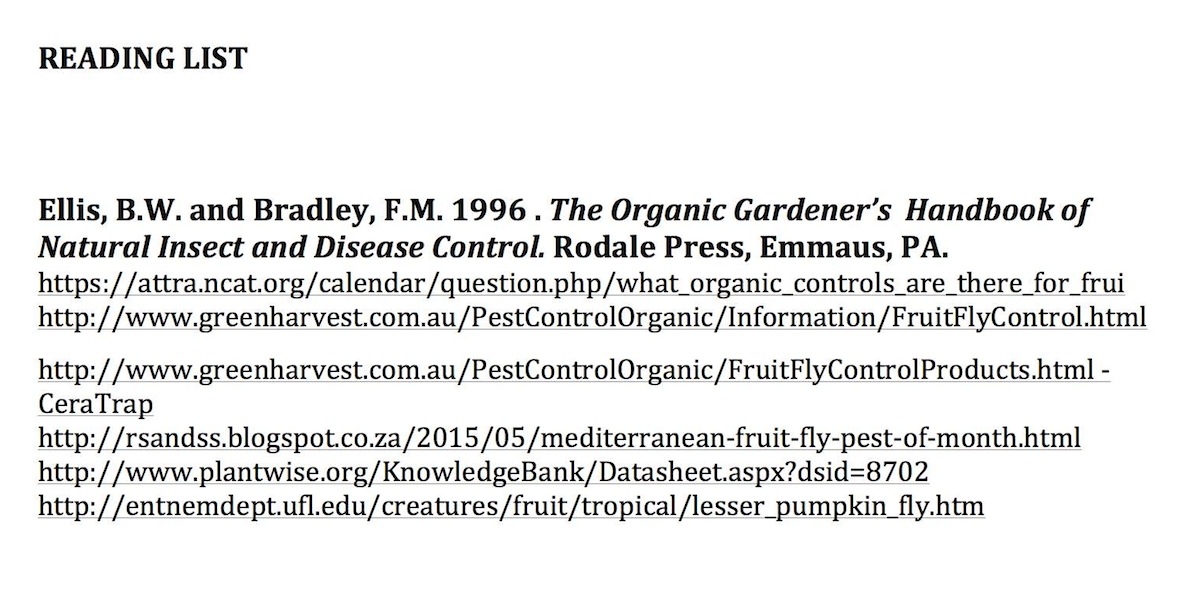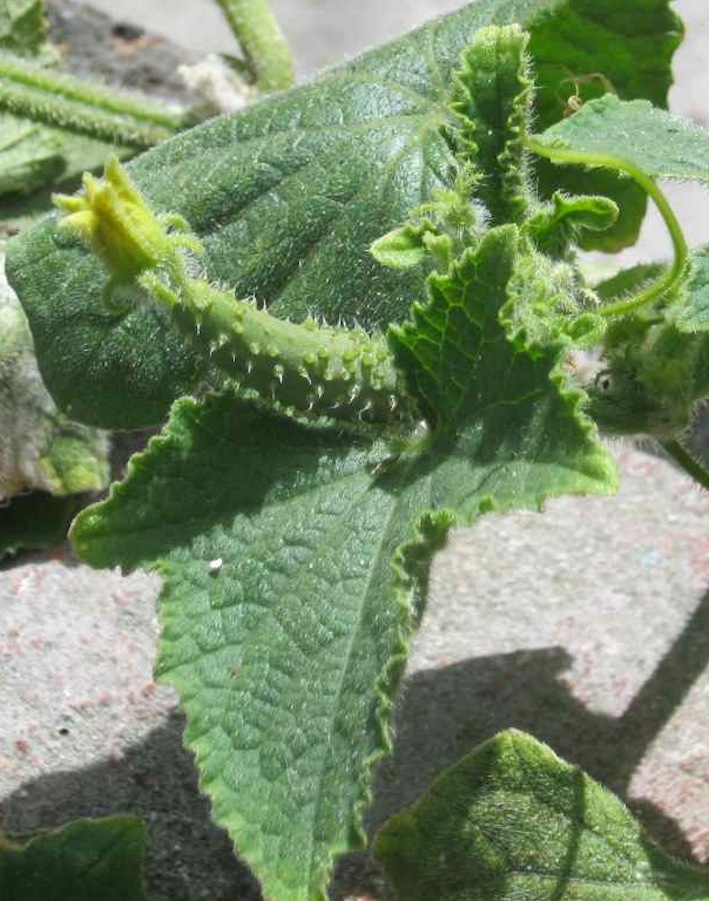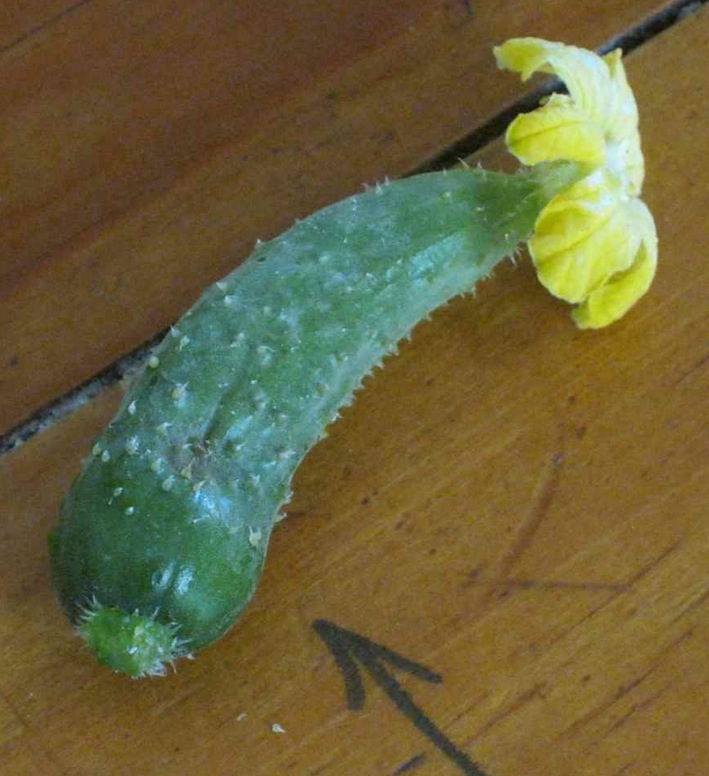sanitize and select:
the simplest, cleanest methods of fruit fly control
sanitizing for fruit fly control
This page starts the discussion on general methods for fruit fly control, of all types of fruit flies, on all types of fruit. Sanitizing involves cleaning up your crop plants regularly, to break the life cycle of the fruit fly and prevent it multiplying.
Every day pick up all fallen fruit, but also pick all fruit with dimples or weeping sap, or prematurely ripe fruit, signs of having been stung, as soon as possible. It may be too late when the fruit have fallen to the ground, because the larvae may have left the fallen fruit to pupate in the soil.
The larvae and pupae must be destroyed to prevent future generations of fruit fly and there are many natural or organic means of destroying them. You can do this by soaking the fruit in water for two days, and then discarding them, or making a liquid fermentation (you can use as plant food) with the fruit in a bucket of water, or feeding the fruit to livestock before any larvae emerge, or to chickens which eat larvae in the fruit and scratch in the ground for pupae. The fruit can also be buried 2 feet deep, too deep for the flies to emerge (see the life cycle, referring to the shallowness in the soil at which the larvae pupate), or the larvae can be destroyed by heat in well managed hot composting or by the fruit being boiled and then fed to animals, or placed in a sealed clear bag in the sun. The whole host plant can be removed if it is a practical solution, and the residues of the crop plants can be disposed of after harvest.
selecting for fruit fly control
As fruit fly multiply through the summer, earlier harvesting fruit are less likely to be severely attacked, especially in areas with cold winters where the fruit fly die off, so select early fruiting plants. Also grow dwarf varieties of fruit tries or train them as espaliers, or keep them trimmed under 2.5m to enable cleaning up stung fruit more easily, also using the rule of thumb that you remove all fruit you cannot reach easily. Select fruit that are less fruit fly prone, and avoid planting fruits you don't eat often and will neglect, as these fruit are less useful to you and may re-infest your other crops. In South Africa a lot of commercially available fruit fly controls are either very pricey or very poisonous. Homemade lures are often not totally effective, and bagging fruit is time consuming. This, and experience, leads some authors to the conclusion that the most effective organic solution for avoiding fruit fly damage is just not to supply host plants. The harvest
of crops that are vulnerable to fruit fly, such as thin skinned fruits,
should be timed not to come in high summer, the worst months for fruit
fly. This would be January to March in South Africa. Rip out soft
skinned crops in December. No fruit fly host plants should fruit after
this time. Thick skinned varieties of fruits such as cucurbits can fill
this timing gap as an alternative. Pumpkins are a good example of thick skinned fruit.

------
home page for great links and useful tips on home gardening
-------
vegetable gardening the natural, low cost methods
------
the fruit fly life cycle and its usefulness in choosing control measures
-------
link to a useful, organically minded source on fruit fly control
Restore Nature Newsletter
I've been writing for four years now and I would love to hear from you
Please let me know if you have any questions, comments or stories to share on gardening, permaculture, regenerative agriculture, food forests, natural gardening, do nothing gardening, observations about pests and diseases, foraging, dealing with and using weeds constructively, composting and going offgrid.
SEARCH
Order the Kindle E-book for the SPECIAL PRICE of only
Prices valid till 30.09.2023
Recent Articles
-
Rose
Dec 17, 23 04:08 AM
I am doing research on growing wildlife foraging plants to use in enhancement plantings with wildlife in mind. My thoughts after seeing bears too skinny -
Seeds for a bred Sweeter less acidic Kei apple
Nov 20, 23 03:24 AM
Greetings Greenidiom, I'm a small farmer in kenya. I'm looking to plant a Green fence around a 6 acre plot of land and, I'd wish to make it of kei apples -
Mrs Laura Robinson
Oct 08, 23 02:17 AM
How do I get a copy of the soil aggregation poster??
"How to start a profitable worm business on a shoestring budget
Order a printed copy from "Amazon" at the SPECIAL PRICE of only
or a digital version from the "Kindle" store at the SPECIAL PRICE of only
Prices valid till 30.09.2023








